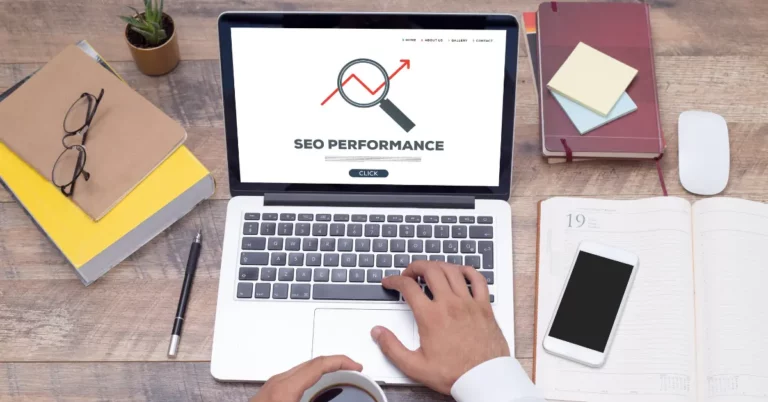Dropshipping-based E-commerce websites rely heavily on online traffic to acquire leads and increase revenue. It’s important to generate enough traffic to keep your sales up, and one of the best ways to do so is through search engine optimization or SEO.
SEO is the process of increasing the quality and quantity of your website’s traffic so it’ll be more visible to relevant searches. But how does it work? In this article, we’ll discuss the basics of SEO for e-commerce, and how it’s beneficial to your dropshipping business.
How Does SEO Work?
Search engines like Google and Bing use bots to crawl web pages, going from one site to another to collect information about those pages and index them. Algorithms analyze the pages you’ve indexed while considering thousands of ranking factors to determine the order of how the pages should appear on every search query.
Google wants its users to have a seamless and efficient search experience, which is why the algorithms are designed to provide the most relevant and authoritative pages related to your search. Optimizing your E-commerce website can help you rank higher and become more visible to your target audience.
Here are some of the reasons why you need SEO for E-commerce:
- Long-term benefits. The benefits you get from pay-per-click ads end when you stop paying for them. While it could take months before you see solid results from SEO, the benefits you get from it are long-lasting. When your website ranks higher and starts showing up in search results, you’ll passively generate leads and earn revenue.
- Generate relevant and quality traffic. Effective SEO places your dropshipping business in front of your target audience. When your website is optimized for the right keywords (more on that below), your customers will be able to find you.
- Builds trust and credibility. Running a successful dropshipping business means establishing trust and credibility among both potential and existing customers. Ranking higher on Google gives people the impression that you’re one of your industry’s top players.
What You Need to Know About Dropshipping SEO in 2021
Now that you know what SEO is and how it benefits your dropshipping business, the next step is to understand the basics. Here’s what you need to know about SEO for E-commerce:
1. Keyword Research
It’s impossible to rank higher on search engines if you don’t know what to rank for. Keyword research is the process of researching popular search terms for your target audience types in Google. Once you have a list of keywords, you can strategically incorporate them into your content to increase online visibility.
You can use several tools for keyword research, such as Soovle, Google Search Console, or Ahrefs Keywords Explorer. For related keywords or long-tail keywords, you can use the Keywords Everywhere Chrome extension. Long-tail keywords are more specific phrases that visitors are likely to use. You can also incorporate long-tail keywords into your article for a more targeted result.
2. Keywords Research on Competitors
Besides doing basic keyword research, it also pays to know the keywords your competitors are using. If they’re putting in the effort to rank for specific keywords, you might also want to check what those are. This is a very important step of your seo for e-commerce strategy.
It’s easy to conduct competitor keyword research as long as you use the right tool, like Moz or Ubersuggest. But if you’re just starting your dropshipping business, you don’t have to analyze the keywords of your biggest competitors, like Shopify or BigCommerce.
Research smaller competitors within your niche. In this way, the keywords you’re searching for are relevant to your dropshipping business. The next step is to paste their domain into your keyword generating tool, and you’ll be able to see the keywords they’re ranking for. You’ll have an idea of which keywords most relevant to your niche and which ones aren’t.
3. On-Page SEO
Once you have the keywords you want to rank for, the next step is to use those keywords on your website. On-page SEO refers to optimizing elements on each web page to improve search engine ranking. A good on-page SEO strategy ensures that search engines can easily understand your page while indexing. When Google knows what’s on your page, there’s a greater chance that your website will appear in relevant search queries.
Here are some of the tips on how you can properly implement on-page SEO:
- Create content that gives value to your visitors to keep them on your page.
- Write long-form product descriptions (about 1000 words) and include the necessary keywords. However, remember not to stuff too many keywords in your content and product descriptions.
- Your pages should contain the necessary information relevant to your customers, like returns, terms of service, shipping options, etc.
- Place the main keyword in subheadings, meta descriptions, image alt tags, and URL.
4. Content Creation
Producing high-quality and relevant content brings in organic traffic to build trust and credibility within your industry, and is especially important in SEO for e-commerce .
The first thing you need to do is to create content around your product niche. This can help in improving organic traffic, generate leads, and increase your conversions. When your target audience is looking for a product to purchase, it’s safe to assume that they’ll start searching for it on Google.
Your website ranks higher for your target market if you have several high-quality content based on the products you sell. Educate users about the product, how it benefits them, how to purchase, etc. Website visitors will likely turn into loyal customers because you’ve given them high-value content.
You can start by writing a blog with 800-1000 words per week. Once you get the hang of writing content, you can adopt the skyscraper technique, which involves finding topics relevant to your niche that rank well on search engines and social media. You reverse engineer the content to create something better than the existing one.
Now the important thing to note is that you would need to avoid plagiarism while writing content for your website. This is to be done to ensure that your written content is not similar to some other website’s content.
5. Content Marketing
After creating content, the next step is to market what you’ve written to your target market. You can do that by joining groups on Facebook or Reddit.
Let’s say you sell skincare products. Joining health and beauty communities on Facebook allows you to share your blogs with your target audience. However, refrain from spamming them with your content as soon as you join. Content marketing involves building relationships with your audience. Take time to connect with people before sharing your content.
Here are two ways you can market your content:
Link Building
Link building directly affects SEO and determines your search engine rankings. Google thinks a piece of content is good if it has a good number of high-quality links. This results in a higher domain authority (DA) and rankings.
Some of the White Hat techniques you can use to build content include the following:
- Broken link building
- Link outreach
- Guest blogging
- Content marketing with emails
Pay-Per-Click Ads
Pay-per-click (PPC) is an advertising strategy where advertisers (you) pay a fee every time someone clicks on your ad. Unlike SEO, PPC can be launched within the day.
Many marketers make the mistake of buying ads when their dropshipping store isn’t making any money. You need to understand your customers well to zero in on the right targets, such as pros and cons of your PPC campaign, keywords your audience use, customer demographics, etc.
Ask a few customers who visit your website to participate in a survey. Update your survey and analyze the results regularly, and over time, you’ll get an idea of how visitors reach your website.
6. Website Speed
Website speed negatively affects SEO as it also affects user experience. Slow websites equal higher bounce rates and decreased conversions. In fact, according to SOASTA Research, bounce rates can go up to 90% of your website takes more than three to four seconds to load.
Here are some of the ways to ensure that your website loads fast:
- Reduce and resize the images on your website.
- Check your website speed using Pingdom or Google Page Speed Insights.
- Use a fast and responsive web hosting package.
- Minimize the use of plugins and JavaScript and CSS files.
- Avoid redirects.
7. Dropshipping Website Structure
Dropshipping websites need a proper E-commerce website structure. Search engines will be able to find the pages quickly and index them faster, especially if your seo for e-commerce strategy is on the spot! It will also help in improving website speed because the proper structure needs fewer codes.
E-commerce websites usually have more pages compared to other websites, so it’s important to have the right structure early on; otherwise, your customers will easily get lost in your website. One way to keep your customer’s attention is by implementing the three-click rule.
The three-click rule says that web visitors should find the information they need with no more than three clicks. This makes sense since users often become frustrated if they can’t easily find what they’re looking for.
Keep in mind that you need to properly categorize web pages that are already live on Google. Be sure that your old URL is a 301 redirect to the new one; otherwise, you’ll rank lower on the search pages and decrease Domain/Page Authority.
The Bottom Line
Dropshipping is one of the most lucrative businesses to be in right now, especially amid the pandemic as many people are doing their shopping online.
If you follow the tips in this article, you will be able to maximize your business’ potential by applying these SEO for e-commerce methods to increase your reach and profits.
We have just one final tip to give you. As you know in order for a dropshipping business to succeed in the long-term, you will need a supplier who will be able to source for you top quality products and fast ship them on your behalf to your customers worldwide.
The best partner you can choose if Yakkyofy, because we can:
- Provide you with an all-in-one software integration to automate your daily tasks;
- Source for you over 12 million products in real-time at B2B prices;
- Deliver your products in a handful of days, thanks to our Special Line Shipping Service;
- and so much more!
Thank to our software, we will take of everything related to logistics, product sourcing and With Yakkyofy, you deal with the marketing and we will take care of everything else! All you need to to start benefiting from all the above is simply…
BIOGRAPHY OF THE AUTHOR:
Luisa started freelance writing in 2010. Since then, she has covered topics relating to health, entrepreneurship, and marketing strategies. She now works as a Content Promotion Manager for SMB Compass and is mainly focusing on business loans, strategies, and marketing tactics. If she’s not writing, Luisa spends most of her free time binge-watching her favorite TV shows on Netflix, watering her plants or tucked in a well-lit corner reading a good book.











